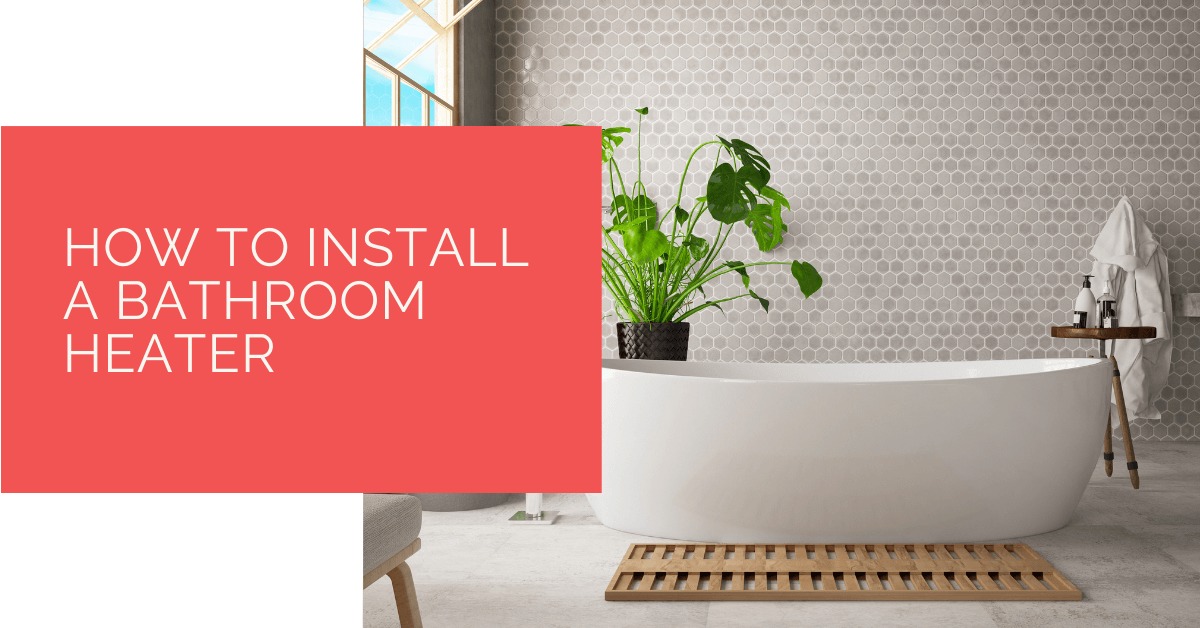Who doesn’t enjoy the warmth and comfort of a heater in a bathroom? It’s one of our favourites, especially while we’re rushing for work or the kids are hurrying through their daily duties in the winter.
You don’t even have to turn on your house’s central heating system; purchase a separate heater for your bathroom to keep it toasty without overheating your residence.
This is a win-win situation as your mornings get warmer with your energy bills destressing you fundamentally.
There are a few factors to consider while shopping for a bathroom heater for your residence. In the following article, we will glance at those factors and know the available bathroom heaters types that are perfect for your homes.
This guide to bathroom heaters is the answer to your questions. Let’s get going, shall we!
Contents
Key Takeaways
- Bathroom heaters are a great way to add warmth and comfort to your bathroom during the winter, without relying on central heating for the entire house.
- There are different types of bathroom heaters available, including portable heaters, ceiling heaters, wall heaters, exhaust fan heaters, and underfloor heating, each with its advantages.
- Installing a bathroom heater is manageable for someone with basic electrical knowledge and the right equipment. Still, it’s important to follow safety guidelines and ensure proper grounding and wiring for these high-power appliances.
What Is a Bathroom Heater?
A bathroom heater is a heating device whose primary aim is to keep you warm while the weather outside is cold. In addition, because bathrooms can get excessively cold in the winter, a heater is an excellent choice.
Most bathroom heater fans employ an infrared heat light to heat the area swiftly. This type of light is perfect for compact spaces like bathrooms.
Types of Bathroom Heaters
Each kind of heater has advantages and disadvantages. Let’s have a look at some of the most prevalent bathroom heaters and what they have to offer:
Portable Heater
These heaters are compact and portable. They’re an excellent option for tenants and folks who want to warm their bathrooms during the winter. These heaters may quickly be taken out of the bathroom and placed in other areas as well.
Most of them are electrically driven, with a heating element inside and a fan to circulate the hot air.
Ceiling Heater
Ceiling heaters are lightweight and are easily installed and relocated. They come with a long lifespan, so short-term stress is covered.
If you already have a ceiling box to place the heater, this heater is excellent for you. You’ll save money on electrical configuration too.
Wall Heater
Wall heaters are either permanently screwed into the wall or simply hung to the hooks. They are low-cost, long-lasting, and energy-efficient, making them excellent for heating tiny bathrooms.
Exhaust Fan Heater
You will not have to fret about humidity or heat if you use a fan heater. Your bathroom will remain warm while also controlling mould and fungal infection. You can switch off the heater to use it as an exhaust in the summers.
Underfloor Heating
Floor heating is an excellent alternative when you want to spread heat evenly throughout the bathroom from the floor up.
The heat source is hidden beneath the floor and is much more efficient than most other solutions. It’s a fantastic option for a makeover, and electricity or hot water can be used as a source.

How Do You Set up A Bathroom Heater on Your Own?
Bathroom heaters are undeniably necessary bathroom equipment that many people cannot live without.
Installing a bathroom heater is also not difficult for someone with a basic understanding of electrical systems, as long as they follow a few simple steps.
What Equipment Do You Need to Install a Heater on Your Own?
A bathroom heater is an electrical appliance that demands a lot of power. Thus, the installed devices have to be standardised. Use high-quality wiring and pipelines because weaker ones may grow brittle, break, or leak over time.
You’ll also need an impact drill, a suction circuit breaker, screws, screwdrivers, and drills and anchors.
What is the Safest Way to Set up a Heater?
Once the installation equipment is available, please go over the machine’s installation guide information.
Recognise any unique considerations or precautions you should take when installing the bathroom heater.
Following that, the process of setting up the bathroom heater commences. The following are the fundamentals for installing a bathroom heater:
Determine Where the Heater Will Be Installed
You can decide the location by measuring the height of the machine before installing it.
The installation height of a water heater, which is generally 160-170 cm above the bathroom floor, makes it simple to use. It should also be situated close to the showerhead.
Turn Off the Main Switch’s Circuit
Turn down the circuit breaker at the power switch or the customer unit cabinet for safety during the installation of water heaters and all sorts of electronic devices in the house.
Drill a Hole Through the Wall to Secure the Heater
When deciding the location of water heater installation, several factors must be taken into account. Depending on the type of bathroom wall or floor material that needs to be drilled, use an electric or robust cordless drill with a wall drill or a mortar drill.
Drill holes in the wall for anchor points and hammer the anchor into place until it is thoroughly ingrained in the wall. Make sure the anchor is firm and will not slip down easily.
Then tighten the screws using a screwdriver while holding the heater to the wall.
Wiring and Installation
The circuit breaker may cause serious harm while in operation. Thus, it should not be mounted in the bathroom or around the water heater.
In addition, while installing a circuit breaker, you must match its size to the water heater’s wattage.
A 20A breaker should be used for a 3,500-watt water heater. Also, use a 6 sq. mm wire. A 32A breaker should be used for a water heater rated at 4,500-6,000 watts.
Connect the Wires and Ensure Proper Grounding
After the wiring for the bathroom heater, the following task is to connect the wires to the appropriate positions, which are the L, N, and G lines, with the green cables being the most critical.
The ground wire, which mostly has a pre-set screw, can be linked to the ground terminal, however, in the event of old residences without a primary grounding system.
Check for Electric Shock Defence
The last step is to test if the power cut system can function normally by pressing the TEST button on the bathroom heater.

Heat Pump Source: Reliable Heating and Cooling Solutions
At Heat Pump Source, we take pride in our unwavering commitment to serving the UK with top-tier HVAC solutions. From the efficiency of heat pumps and the cool relief of air conditioning to the warmth of boilers, radiators, and underfloor heating, our dedicated team is always at the forefront of innovation. We understand the unique needs of every household and business, and we strive to provide dependable health and cooling products and services that are tailored just for you. Ensuring your comfort and satisfaction is our utmost priority. Whether you have questions, need guidance, or require support, we’re always here to assist. Please don’t hesitate to contact us; we’re eager to be of service.
Wrapping Up
Winter will arrive faster than you think. For some of us, this means having to wake up to a freezing bathroom every morning.
A bathroom heater is an excellent solution to combat the chill in your bathroom. Overall, there are numerous models to choose from, and you will undoubtedly find the ideal model for your requirements. Considering your demands and budget, you can choose from various bathroom heaters.
Now that you know how to change your freezing shack into a warm sanctuary, it’s time to get to work!
About the Author
At Heat Pump Source, our articles are the product of a collaborative effort among a team of highly skilled HVAC experts. Our dedicated professionals, hailing from diverse backgrounds in heating, ventilation, air conditioning, and refrigeration, contribute their extensive knowledge and experience to every piece of content. This multidisciplinary approach ensures comprehensive coverage. Our commitment is to deliver authoritative, reliable, and tailored advice to meet the unique needs of every household and business across the UK.

